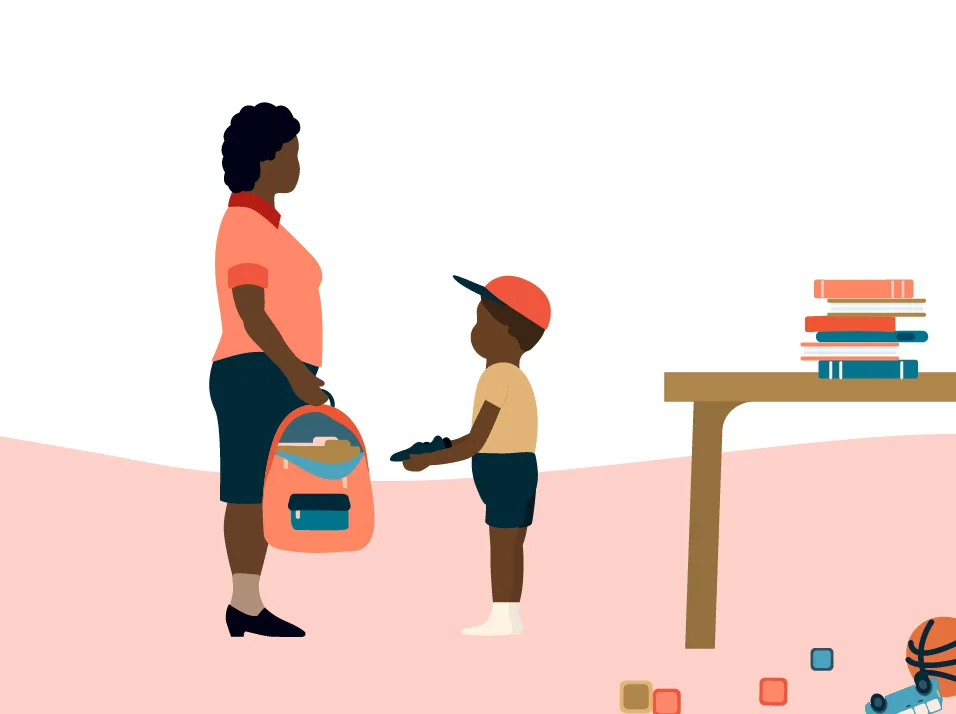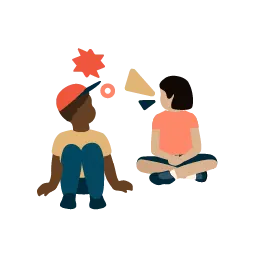A day in the life of a child with receptive language disorder

By Julie Rawe
Expert reviewed by Kelli Johnson, MA

Meet Malcolm, a kindergartner with receptive language disorder. He’s a bright kid, but he has trouble understanding what people say. This impacts almost every aspect of his day. To see how receptive language disorder can impact kids, take a look at a typical day in Malcolm’s life.

7:30 a.m.
Grandma is trying to get Malcolm ready for school: “Get your shoes and grab that stack of library books.” “Huh?” he says. “Get your shoes and get that stack of books on your desk,” she says. He comes back with only his shoes. “Where are your books?” Grandma asks. “Huh?” he says. “Get the stack of books on your desk,” she says. Malcolm stares blankly at her and then smiles, his way of telling her he doesn’t understand what she wants him to do.
Challenge related to receptive language: Asking people to repeat what they say, following directions

10 a.m.
Malcolm is getting pretty good at the circle time routine. He knows that when all the other kids go sit on the rug, he should too. But it’s hard to follow the story his teacher is reading. When she asks questions, either he doesn’t understand or he doesn’t know the answer. “Where is the cat going?” the teacher asks him. “The cat sees a bird,” he responds. “Malcolm, where is the cat going?” the teacher repeats. He fidgets a bit and says, “I have a cat named Ollie.”
Challenges related to receptive language: Answering questions, staying on topic

12 p.m.
At lunch all the boys talk so fast. “Mmm, these meatballs are so good,” one says. “Yeah, I love ’em,” a second boy says. A third agrees: “Yum, yum, get in my tum-tum! Hey, Malcolm, do you like meatballs? Are you going to eat yours? Can I have one?” When Malcolm says “Yes,” he’s thinking about whether he likes the meatballs, not whether he wants to give one away. “Hey,” he yells after the friend pops it in his mouth. The lunchroom monitor gives Malcolm a warning.
Challenges related to receptive language: Taking part in conversations

7 p.m.
It’s TV time, and it’s Malcolm’s sister’s turn to pick a show. She’s on the couch, waiting to press the “play” button. “Are you ready, Freddy?” she asks. “I’m not Freddy!” he says angrily. “It’s OK to say ready Freddy,” his sister says. “It just means — ” But he cuts her off: “Stop teasing! And stop picking bad shows. I hate your shows. They don’t make sense.”
Challenges related to receptive language: Getting puns and jokes, staying “tuned in”

9 p.m.
Malcolm is too upset to fall asleep. Grandma tries to explain about his sister. “She wasn’t teasing you,” she says. “She was just rhyming with ready.” Grandma is using short sentences to help Malcolm keep up. He tries to tell her about the meatballs, but it’s too hard to get the words out. “It sounds like you’re feeling really sad about that,” Grandma says. “Can I give you a hug? Let’s tell your speech teacher what happened. She has good ideas that can help you next time.”
Challenges related to receptive language: Coping with social challenges
About receptive language disorder
Receptive language disorder makes it hard to understand what people say. It’s not a problem with hearing. And it has nothing to do with how smart someone is. It’s a difference in how the brain processes information.
Kids who struggle to understand language often have trouble expressing themselves, too. They can be diagnosed with a language disorder as young as age 4. Children don’t outgrow it, and their trouble with language can affect how they behave in school. It might seem like they’re choosing to misbehave. But it could be that they don’t understand what they’ve been told to do.
Receptive language disorder can sometimes get overlooked, especially if teachers think kids are just acting out. For children who speak a language other than English at home, trouble with receptive language can look like trouble learning English. But with speech therapy and other support, all kids can get the help they need for their receptive language challenges and thrive in school and in life.

